In This Issue
- Cybercrime Is Danger
- Isn’t After a Ransom
- Move to the Cloud
- Report from the CEO
- US Israel Cyber Pact
- Cyber Advice for SMBs
- Enterprise Cloud Shift
- Cloud Comes of Age
- Cloud Inflection Point
- Telecom Svcs Stocks
- Docker in Multi-Cloud
- 5G Is Coming Nearer
- Telefonica & Huawei
- Mobile Edge Compute
- Towers Edge Locales
- Smart Cities See Fog
- Coming DCIA Events
Time to Accept Cybercrime Is Real Danger
Excerpted from CloudTech Report by Mark Cattini
 The world recently witnessed the WannaCry attack.
The world recently witnessed the WannaCry attack.
This threat is a wake-up call to everyone that the danger of cybercrime is exponential.
While we need to be ready to see global attacks of this nature increase, the technology that is required to combat these hazards exists now.
From vulnerability detection and anti-virus, device and network monitoring, to management tools and data backup, businesses remain in a never-ending battle to stay current as these threats become more complex.
The key is to combine modern technology solutions, both preventative and reactive, so that protecting critical information systems and data is easily implemented and managed.
Estimates put the number of countries affected by the WannaCry strain of ransomware at more than 100, with Russia’s Interior Ministry and the UK National Health Service being seriously affected.
Effective security tactics rely on two core concepts – first avoiding exposure and then forcefully responding and defeating the threat… Read More
When Ransomware Isn’t After a Ransom
Excerpted from NY Times Report by Jim Kerstetter
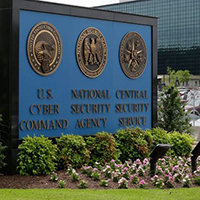 We are two months into “ransomware as a mainstream news topic,” and we have quickly moved toward scrutiny of a new wrinkle in that kind of cyberattack: when ransomware is used as a smoke screen for something else.
We are two months into “ransomware as a mainstream news topic,” and we have quickly moved toward scrutiny of a new wrinkle in that kind of cyberattack: when ransomware is used as a smoke screen for something else.
On Tuesday, an attack that looked an awful lot like the WannaCry ransomware hacking in May started in Ukraine and spread throughout the world.
But security researchers are beginning to infer that the attack was really about causing damage to computers. The money? Eh, not a big deal.
In fact, it would have been awfully hard for most victims of the attack to pay a ransom, since the lone email address connected to it was shut down by a German email provider.
So why bother? That’s the question that intrigues security researchers.
The most obvious answers are to cause trouble or send a political message.
The attack that started in Ukraine appeared to have been timed to hit the day before a national holiday… Read More
Don’t Want Cyberattack? Move to the Cloud
Excerpted from Bloomberg Report by Elaine Ou
 Malware has yet again disrupted businesses around the world, just weeks after hackers used leaked National Security Administration (NSA) tools in a global cyberattack called WannaCry.
Malware has yet again disrupted businesses around the world, just weeks after hackers used leaked National Security Administration (NSA) tools in a global cyberattack called WannaCry.
The ultimate target in both cases may be people’s sensitive information — a troubling reality that should finally motivate organizations to get serious about security.
Tuesday’s attack was more sophisticated than WannaCry, which took advantage of a Windows exploit to infect more than 200,000 computers in 150 countries (and which cost, by one estimate, more than $4 billion).
Microsoft security researchers have traced the initial infection to a Ukrainian software vendor called M.E.Doc, which inadvertently released a malevolent update to its popular tax accounting software.
When customers installed the automatic update, a piece of malware obtained passwords that were then used to gain access to other machines.
The so-called Petya virus then locked users out of their computers and demanded $300 in bitcoin to get back in… Read More
Report from DCIA CEO Marty Lafferty

The DCIA commends Cybereason for discovering a vaccine against this week’s cyberattack that targeted government and private corporate servers globally.
Initially dubbed “Petya” due to code in common with earlier malware of that name, Kapersky Labs later renamed it “NotPetya” when such similarities proved superficial.
There’s currently no governing body for malware naming standards.
Cybereason determined that the original file is actually named “perfc,” and that when initially run, the program will search for that file name, and, if found, will cease operating.
Users of Microsoft Windows operating systems, therefore, should locate the C:\Windows\ folder and create a file named perfc with no extension.
This will kill the application before it begins encrypting files and will protect individual computers.
NotPetya also uses the PSEXEC remote command tool in Windows to encrypt user data more broadly on infected networks.
It should be noted that victims were running MS Win computers which had not been updated with a patch Microsoft issued in mid-March to close a vulnerability in the SMBv1 protocol.
Microsoft recommends installing the MS17-010 patch, disabling SMBv1 services, and blocking incoming SMB traffic on port 445.
The DCIA continues to view cyberattacks such as NotPetya and the recent WanaCry as urgent wake-up calls to IT professionals and enterprise senior management to take action on cybersecurity.
Failure to allocate funds for essential resources to maintain at least basic levels of security, such as patching operating systems and instituting two-factor log-on authentication, is no longer an option.
Share wisely, and take care.
US Enters Cyber Pact with Israel
Excerpted from The Hill Report by Morgan Chalfant
 The Trump administration announced a new bilateral working group between the United States and Israel on cybersecurity.
The Trump administration announced a new bilateral working group between the United States and Israel on cybersecurity.
Tom Bossert, White House Homeland Security and Counterterrorism Advisor, disclosed the new partnership to combat cyberattacks during remarks at an annual cybersecurity conference in Tel Aviv.
“These high-level meetings represent the first step in strengthening bilateral ties on cyber issues following President Trump’s visit to Israel,” Bossert said at Cyber Week 2017, according to Reuters.
“The agility Israel has in developing solutions will innovate cyber defenses that we can test here and bring back to America,” the White House aide continued.
“Perfect security may not be achievable but we have within our reach a safer and more secure Internet.”
Bossert said that the working group would begin meeting this week.
On the US side, the representatives include officials from the State Department, Department of Homeland Security (DHS), and Federal Bureau of Investigation (FBI)… Read More
Push to Prioritize Cyber Advice for SMBs
Excerpted from The Hill Report by Joe Uchill
 A bipartisan group of legislators, including the Chairmen of the House and Senate Small Business Committees, introduced legislation Thursday to train staff at small business development centers in cybersecurity strategy.
A bipartisan group of legislators, including the Chairmen of the House and Senate Small Business Committees, introduced legislation Thursday to train staff at small business development centers in cybersecurity strategy.
House Small Business Committee Chairman Steve Chabot (R-OH) and Senate Small Business Committee Chairman Jim Risch (R-ID) are joined by Congressman Dwight Evans (D-PA) and Senator Gary Peters (D-MI) on the Small Business Development Center Cyber Training Act.
A press release touting the new bill describes it as a priority for both committees.
“Many small business (SMB) owners lack the capital and expertise they need to prevent a cybersecurity attack,” Chabot said in the release, adding that “providing cybersecurity training to lead small business development center employees will broaden their expertise to help more SMBs prevent an attack and potentially help save their companies.”
The bill would require that 20 percent of small business development center employees receive certification in cybersecurity strategy consulting.
SMBs create two out of every three new jobs in our country each year, and they need the tools and skills to identify cyber threats… Read More
Tectonic Shift toward Enterprise Cloud
Excerpted from Morningstar Report by Brian Collello
 The ongoing migration to cloud computing is having ramifications for dozens of stocks across our coverage.
The ongoing migration to cloud computing is having ramifications for dozens of stocks across our coverage.
Overall, we view the tech sector as notably overvalued at a market-cap-weighted price/fair value of 1.13.
We still see a tectonic shift toward enterprise cloud computing.
Semiconductors appear overvalued due to the hype around artificial intelligence.
Overall, we view the tech sector as notably overvalued today at a market-cap-weighted price/fair value of 1.13 as of the end of May, versus 1.06 at the end of February and 0.98 two quarters ago.
The Nasdaq index has risen about 6% from the end of February to the end of May.
Semiconductor business conditions have been downright stellar in recent months, perhaps to the point of warnings that a cyclical peak is emerging.
Former best ideas within the enterprise software and IT Services sectors have appreciated in recent months… Read More
Cloud Computing Comes of Age
Excerpted from Baass Report by Bharti Meisuria
 The world of cloud computing and business intelligence has come a long way in the past five years, according to a new research report from Dresner Advisory Service.
The world of cloud computing and business intelligence has come a long way in the past five years, according to a new research report from Dresner Advisory Service.
Dresner has been studying the business intelligence software market for cloud computing since 2012; tracking trends, adoption rates, and information related to all things “cloud.”
The results demonstrate how far business intelligence in the cloud has come, and how far it yet has to go in order to reap the full potential it holds for business growth and opportunity.
According to the Dresner report, as reported by Forbes, 40% of respondents to the survey plan to increase their spending on private cloud business intelligence, while 34% are likely to increase spending on the public cloud.
This shows renewed interest and growth in private cloud investments.
Outlining that a growing number of people are continuing to invest in cloud business intelligence considering its substantial benefits over on-premises applications… Read More
Cloud Computing at Inflection Point
Excerpted from GeekWire Report by Tom Krazit
 Over the next few years, we will learn whether cloud computing is a nice little business that will settle into maturity by the end of the decade or a once-in-a-generation business opportunity.
Over the next few years, we will learn whether cloud computing is a nice little business that will settle into maturity by the end of the decade or a once-in-a-generation business opportunity.
That’s the view of Morgan Stanley’s Brian Nowak, who delivered the Wall Street view of Cloud City earlier this month at our Cloud Tech Summit.
There’s no question right now that cloud computing “is at a point of inflection,” he said, with very strong growth expected over the short term as more and more workloads move into the cloud.
Right now, Morgan Stanley estimates that about 20 percent of all workloads run on the cloud.
“That 20 percent is a very important number because if you look at other adoption cycles, whether it’s notebooks, smartphone penetration, the x86 server, even digital music and video games, when you get to that 20 percent penetration point, that curve inflects and growth accelerates,” Nowak said.
When you get to that 20 percent penetration point, that curve inflects and growth accelerates… Read More
Pre-Market Pulse on Telecom Services Stocks
Excerpted from Sys-Con Media Report
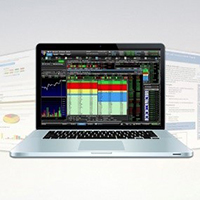 If you want a Stock Review on VEON, Telefonica, KT Corp., or Orange, then come over to Daily Stock Tracker and sign up-for your free customized report today.
If you want a Stock Review on VEON, Telefonica, KT Corp., or Orange, then come over to Daily Stock Tracker and sign up-for your free customized report today.
Today, Daily Stock Tracker assesses VEON, Telefonica, KT Corp., and Orange.
Companies in the Foreign Telecom Services group offer telephone service, cable television, wireless communications, and Internet and satellites services.
These stocks tend to trade via American Depository Receipts (ADRs), meaning they are based outside the US but trade on an American stock exchange.
On Wednesday, shares in Amsterdam, the Netherlands headquartered VEON recorded a trading volume of 5.08 million shares, which was higher than the 3-month average volume of 3.40 million shares.
The stock ended at $3.94, up 1.81% from the last trading session.
The Company’s shares have gained 1.03% in the last month and 11.93% over the previous three months… Read More
Docker Positions for a Multi-Cloud World
Excerpted from GeekWire Report by Tom Krazit
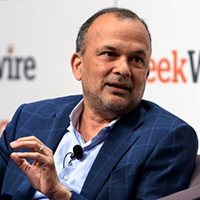 The CIOs have spoken: they’re determined to pursue a multi-cloud strategy, and Docker thinks it is well-positioned to help make that happen.
The CIOs have spoken: they’re determined to pursue a multi-cloud strategy, and Docker thinks it is well-positioned to help make that happen.
That’s one of the first things new Docker CEO Steve Singh learned in his first few weeks on the job after traveling and talking to chief information officers at some of the bigger companies around the world, he told attendees at our GeekWire Cloud Tech Summit earlier this month.
The cloud business may be booming, but it’s still a fraction of the overall market for technology services, and Singh is betting that Docker’s container platform will be a key part of their plans to spread their eggs across several baskets.
“The memory of the IT buyer is very long,” Singh said, referring to the onerous licensing practices of enterprise software vendors over the years.
Most of those IT buyers have promised themselves they won’t get locked in again, and are planning to hedge their bets with multiple cloud vendors and by keeping some workloads under their own control.
Docler currently sees 75 percent of its enterprise deployments as hybrid deployments… Read More
5G Is Nearer Than You Think
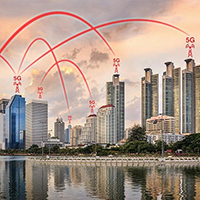 The vision of 5G is becoming clearer, but it will be some time yet before it becomes a full reality.
The vision of 5G is becoming clearer, but it will be some time yet before it becomes a full reality.
5G is expected to bring incredible speeds and a latency (responsiveness) of just milliseconds.
Leaders in 4G LTE are following the standards, and in some cases helping craft them, to stay at the forefront as the 5G world develops.
5G is the next generation of mobile networks.
The standards are not expected to be set until around 2019, so the definition is still somewhat fluid.
We do know that end users can expect ultra-low latency and ultra-high speeds.
Currently, the marketing hype is off the charts.
Wireless network operators are conducting various trials this year, but these are limited to a few cities and only offering fixed wireless, i.e., no mobility, since that functionality will only come once the standards are complete… Read More
Telefonica Peru Transforms Data Center with Huawei
Excerpted from Telecomlead Report
 Telefonica, which has invested $9.2 billion in telecom infrastructure in Peru for connecting 21 million subscribers, has transformed its data center with the assistance of Huawei.
Telefonica, which has invested $9.2 billion in telecom infrastructure in Peru for connecting 21 million subscribers, has transformed its data center with the assistance of Huawei.
Telefonica has transformed an existing central office in the Lince district of Lima, Peru into a data center, as part of its strategy to reduce CapEx and optimize cost.
This method reuses existing assets, reduces CapEx, and shortens the construction period.
Telefonica used the Uptime Tier III standard, which involves online maintenance and 99.98 percent availability.
Telefonica considered factors such as infrastructure requirements such as power supply, cooling, and diesel generator, layout of the existing building, load bearing and reinforcement, etc. before setting up the data center to boost its enterprise business.
Telefonica tapped Huawei, a telecom network maker based in China, for the successful delivery of this project.
The data center in the Lince district of Lima, Peru covers a floor area of 6,000 square meters… Read More
Report Examines Mobile Edge Computing Industry
Excerpted from WhaTech Channel Report
 The Global Mobile Edge Computing (MEC) Industry Report 2017 is a professional and in-depth study on the current state of the Mobile Edge Computing (MEC) industry.
The Global Mobile Edge Computing (MEC) Industry Report 2017 is a professional and in-depth study on the current state of the Mobile Edge Computing (MEC) industry.
The report provides a basic overview of the industry including definitions, classifications, applications, and industry chain structure.
The Mobile Edge Computing (MEC) market analysis is provided for the international markets including development trends, competitive landscape analysis, and key regions development status.
Development policies and plans are discussed as well as manufacturing processes and cost structures are also analyzed.
This report also states import/export consumption, supply and demand figures, cost, price, revenue, and gross margins.
The report focuses on global major leading Mobile Edge Computing (MEC) Industry players providing information such as company profiles, product picture and specification, capacity, production, price, cost, revenue and contact information.
Upstream raw materials and equipment and downstream demand analysis is also carried out… Read More
Turn Cell-Phone Towers into Edge Locations
Excerpted from Forbes Report by Janakiram MSV
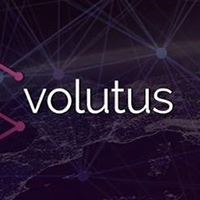 Vapor IO, an Austin, TX based startup announced Project Volutus, a platform that aims to turn tens of thousands of cell towers into edge locations capable of delivering low latency cloud services to contemporary applications.
Vapor IO, an Austin, TX based startup announced Project Volutus, a platform that aims to turn tens of thousands of cell towers into edge locations capable of delivering low latency cloud services to contemporary applications.
Edge computing transforms the public cloud by turning it into a distributed and decentralized infrastructure.
The edge layer provides core building blocks of cloud including compute, storage, and the network by moving them closer to the applications.
With just a single hop to the data center, the latency involved in accessing traditional cloud platforms is dramatically reduced. Since the round trip to the cloud is minimized, edge computing enhances the user experience.
Vapor IO was originally founded to build a combination of software and hardware infrastructure that delivers edge solutions. Project Volutus is based on existing investments made by Vapor IO.
According to the company, Project Volutus is a co-location and data center platform service deployed at the base of cell towers; customers partner with Project Volutus to extend their cloud to the edge of the wireless network… Read More
Smart Cities See Fog Rolling In
Excerpted from Light Reading Report by Mari Silbey
 Fog computing isn’t just another telecom buzz phrase.
Fog computing isn’t just another telecom buzz phrase.
It’s definitely one of those, but it’s also an approach to networking that has significant implications for the development of smart cities — a fact that’s abundantly clear here at the Smart Cities Connect Conference & Expo in Austin, TX.
Definitions of fog computing vary, but Katalin Walcott, IOTG principal engineer at Intel, and Chair of Manageability/Orchestration at the OpenFog Consortium , has a succinct way of distinguishing it from the broader notion of edge computing.
In smart cities, Walcott explains, an edge computing system uses gateways at the edge of a network to collect data from sensors and send it up to a cloud platform.
Fog computing, on the other hand, is more about keeping local data local.
While it doesn’t preclude the use of remote cloud systems, the advantage of fog computing comes from being able to do computation on site without any requirement to connect to faraway data centers, a.k.a. the cloud… Read More
Coming Events of Interest
Industry of Things World Asia — July 3rd and 4th in Singapore. An international knowledge exchange platform bringing together more than 300 high-level executives who play an active role in the industrial internet of things (IoT).
Industry of Things World Europe — September 18th and 19th in Berlin, Germany. Join more than 1,000 high-level executives to rethink your technology and business strategy for scalable, secure, and efficient IoT.
IoT Solutions World Congress — October 3rd through 5th in Barcelona, Spain. This event has grown enormously in no time and is an excellent barometer and source of information, inspiration, collaboration and transformation.
INTRASECT— November 1st and 2nd in Washington, DC. The first conference of its kind to engage key stakeholders in a comprehensive and engaging examination of existing and future regulatory policy governing the usage of commercial autonomous vehicles.
Government Video Expo & National Drone Show — Novermber 28th-30th in Washington, DC. The 22nd annual GVE will feature a full exhibit floor with numerous training options, free seminars, keynotes, networking opportunities, and five new educational pavilions.
